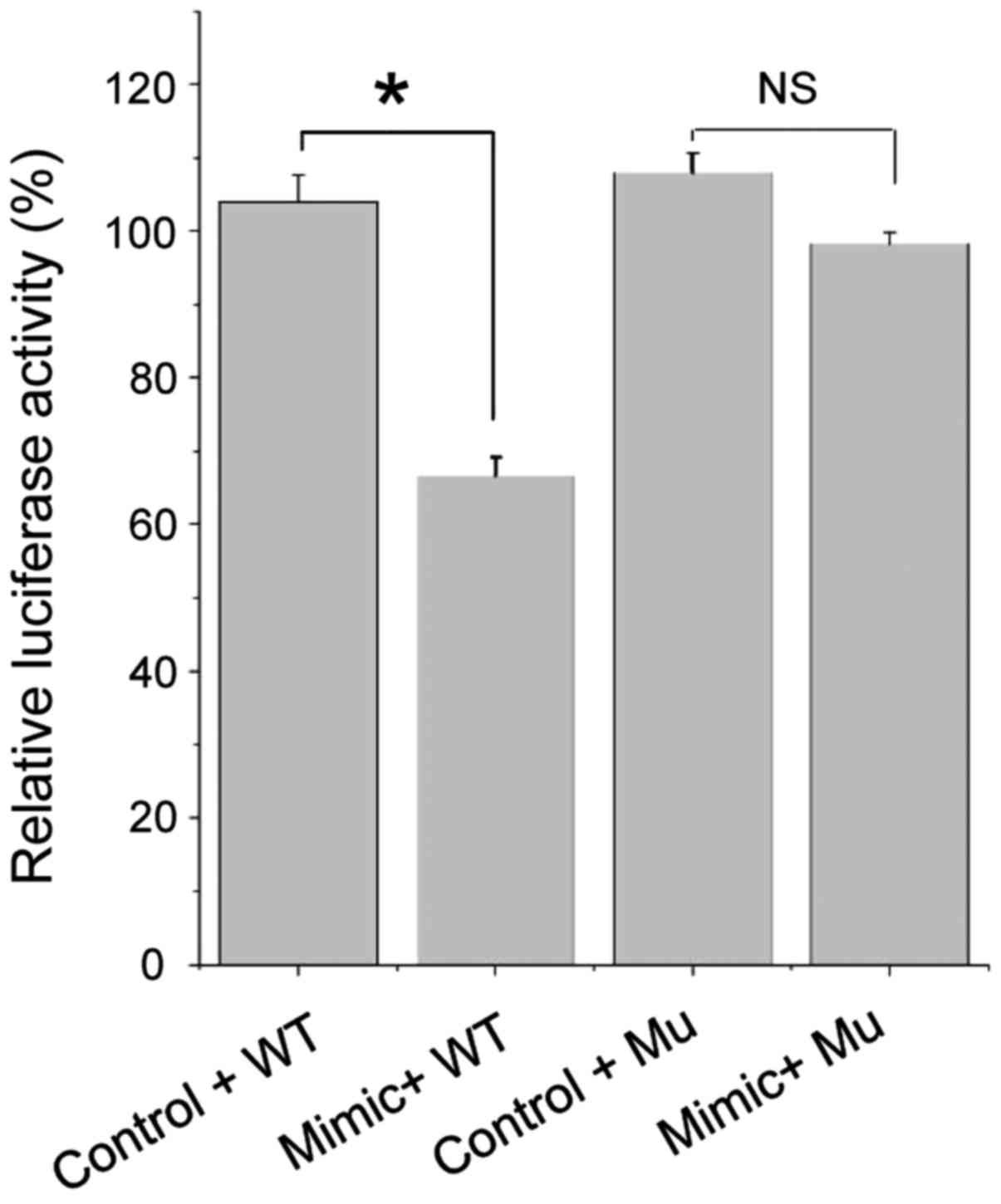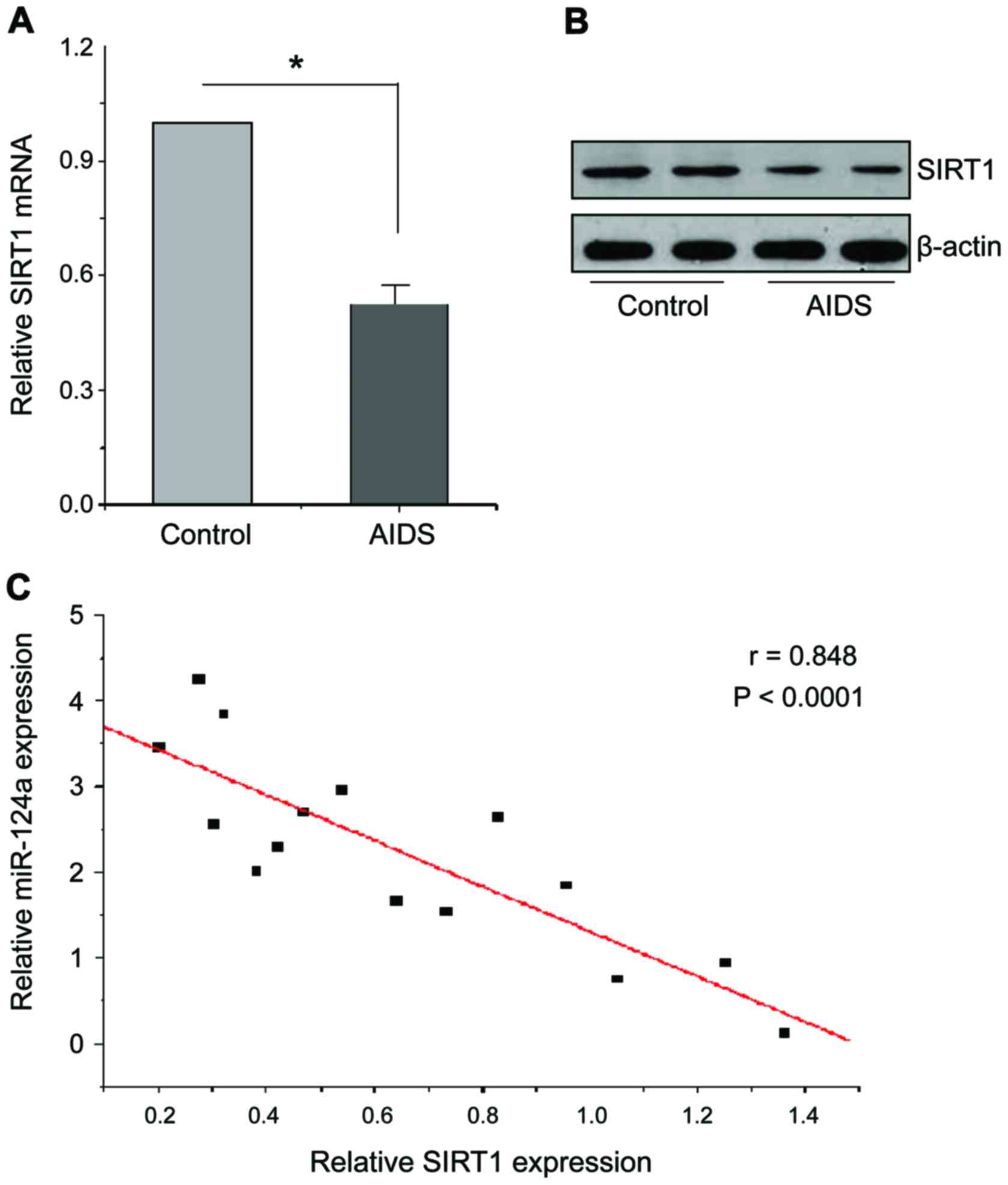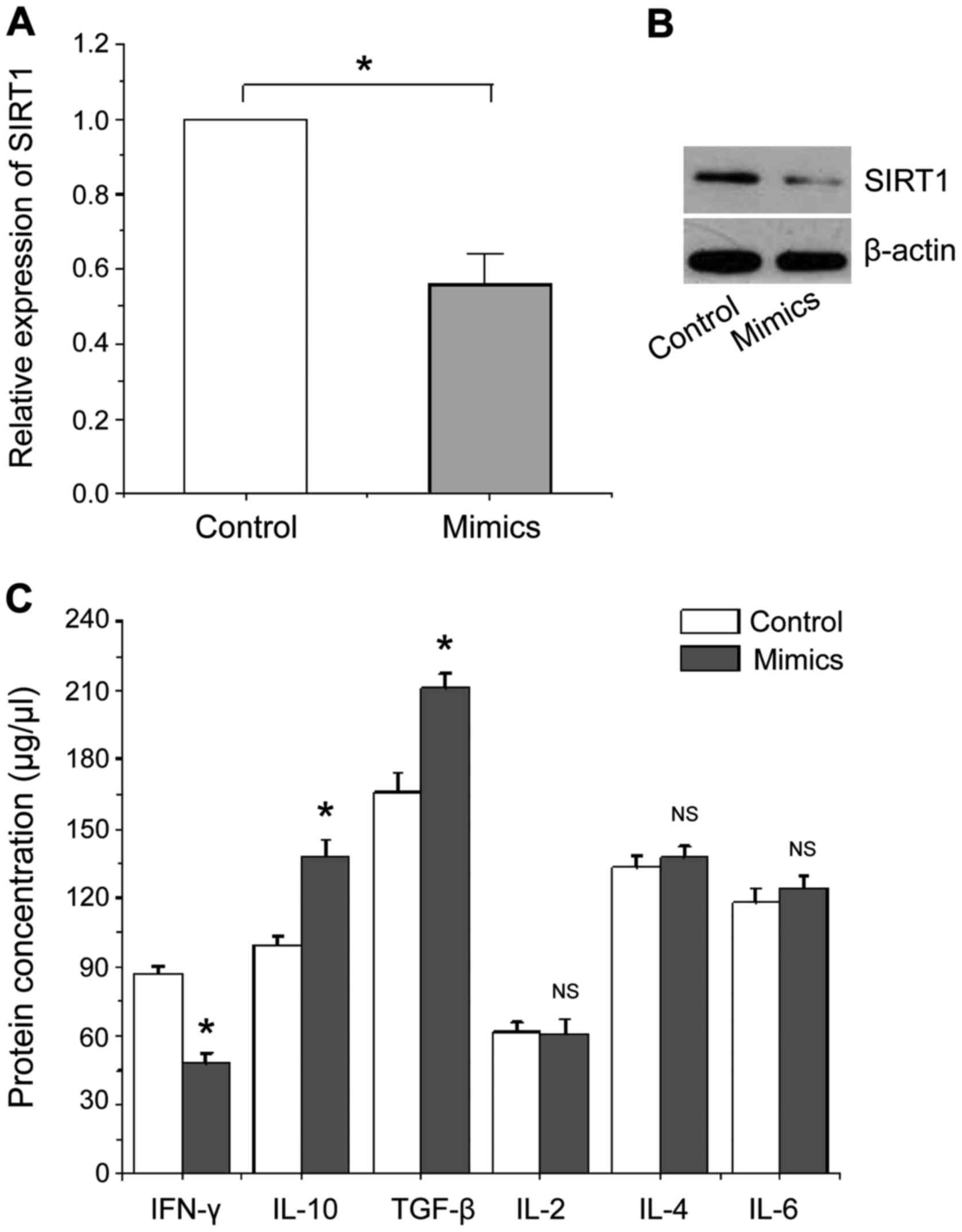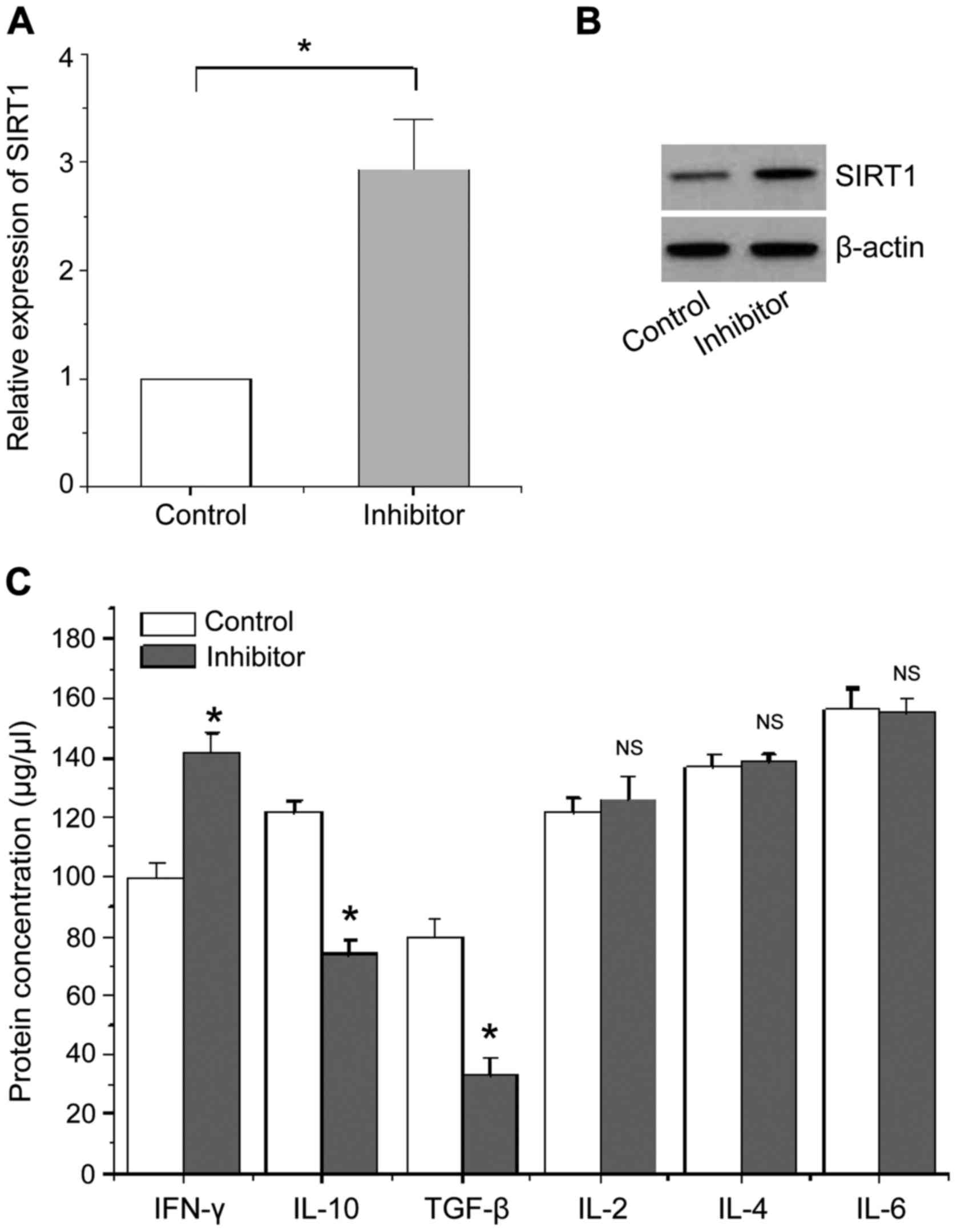Role of miR-124a in T cell activation and immunity in AIDS patients
- Authors:
- Published online on: September 15, 2017 https://doi.org/10.3892/etm.2017.5119
- Pages: 4807-4812
-
Copyright: © Zhao et al. This is an open access article distributed under the terms of Creative Commons Attribution License.
Metrics:
Total
Views: 0 (Spandidos Publications: | PMC Statistics:
)
Total PDF Downloads: 0 (Spandidos Publications: | PMC Statistics:
)
Abstract
The role of microRNA-124a (miR-124a) in the regulation of T cell activation and immunity in patients with AIDS, was studied to provide new insights for the study, diagnosis, alleviation and treatment of AIDS. RT-qPCR technique was used to quantitatively analyze the expression of miR-124a in peripheral blood CD4+ T cells. Dual-luciferase reporter assay system was established to report possible regulatory relations between miR-124a and its potential target gene SIRT1. RT-qPCR and western blot analysis were used to detect the expression level of mRNA and protein of the target genes in T cells. Normal CD4+ T cells from controls were transfected with miR-124a mimics and its negative control, and miR-124a inhibitor and its negative control were transfected into CD4+ T cells from patients with AIDS by T lymphocyte transfection kit to detect the relative expression level of SIRT1 mRNA and protein. The levels of interferon (IFN)-γ, interleukin (IL)-10, transforming growth factor (TGF)-β, IL-2, IL-4 and IL-6 secreted by T helper cells were detected by enzyme-linked immunosorbent assay (ELISA). miR-124a was upregulated in CD4+ T cells of patients with AIDS. The results of firefly luciferase activity detection showed that miR-124a can directly interact with target gene SIRT1 and negatively regulate its expression. miR-124a mimics/inhibitor transfection experiments showed that overexpression of miR-124a in normal CD4+ T cells significantly reduced SIRT1 expression compared with control group, and the expression of miR-124a was positively correlated with IL-10 and TGF-β expression and negatively correlated with IFN-γ expression, but showed no correlation with other cytokines. In AIDS patients, the inhibition of expression of miR-124a in CD4+ T cells significantly increased the expression of SIRT, at the same time, the expression levels of IL-10 and TGF-β were significantly decreased, while the expression level of IFN-γ was significantly increased and no significant difference was found in the expression of other cytokines. The expression of miR-124a in CD4+ T cells of AIDS patients was upregulated and the Th2 type CD4+ T cells are activated by SIRT1 expression inhibition, which in turn enhance the immunity of HIV-infected cells. Our study provides a new molecular target for the diagnosis, alleviation and treatment of AIDS.















